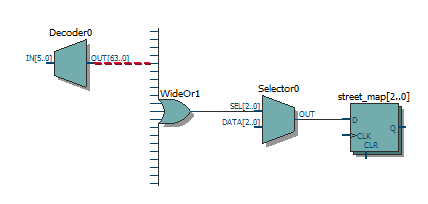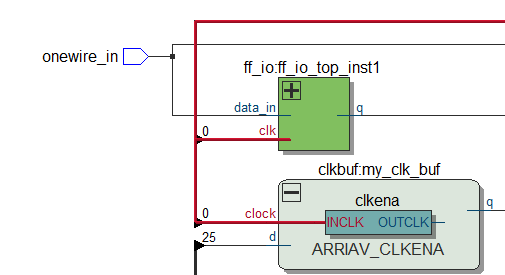In the RTL Viewer and the Technology Map Viewer, you can view the contents of nodes to see their underlying implementation details.
You can view LUTs, registers, and logic gates. You can also view the implementation of RAM and DSP blocks in certain devices in the RTL Viewer or Technology Map Viewer. In the Technology Map Viewer, you can view the contents of primitives to see their underlying implementation details.
Figure 6. Wrapping and Unwrapping ObjectsIf you can unwrap the contents of an instance, a plus symbol appears in the upper right corner of the object in the schematic view. To wrap the contents (and revert to the compact format), click the minus symbol in the upper right corner of the unwrapped instance.
Note: In the schematic view, the internal details in an atom instance cannot be selected as individual nodes. Any mouse action on any of the internal details is treated as a mouse action on the atom instance.
Figure 7. Nodes with Connections Outside the HierarchyIn some cases, the selected instance connects to something outside the visible level of the hierarchy in the schematic view. In this case, the net appears as a dotted line. Double-click the dotted line to expand the view to display the destination of the connection .
Figure 8. Display Nets Across HierarchiesIn cases where the net connects to an instance outside the hierarchy, you can select the net, and unwrap the node to see the destination ports.
Figure 9. Show Connectivity DetailsYou can select a port, pin, bus port or bus pin and click Connectivity Details in the context menu for that object.
You can double-click objects in the Connectivity Details window to navigate to them quickly. If the plus symbol appears, you can further unwrap objects in the view. This can be very useful when tracing a signal in a complex netlist.



